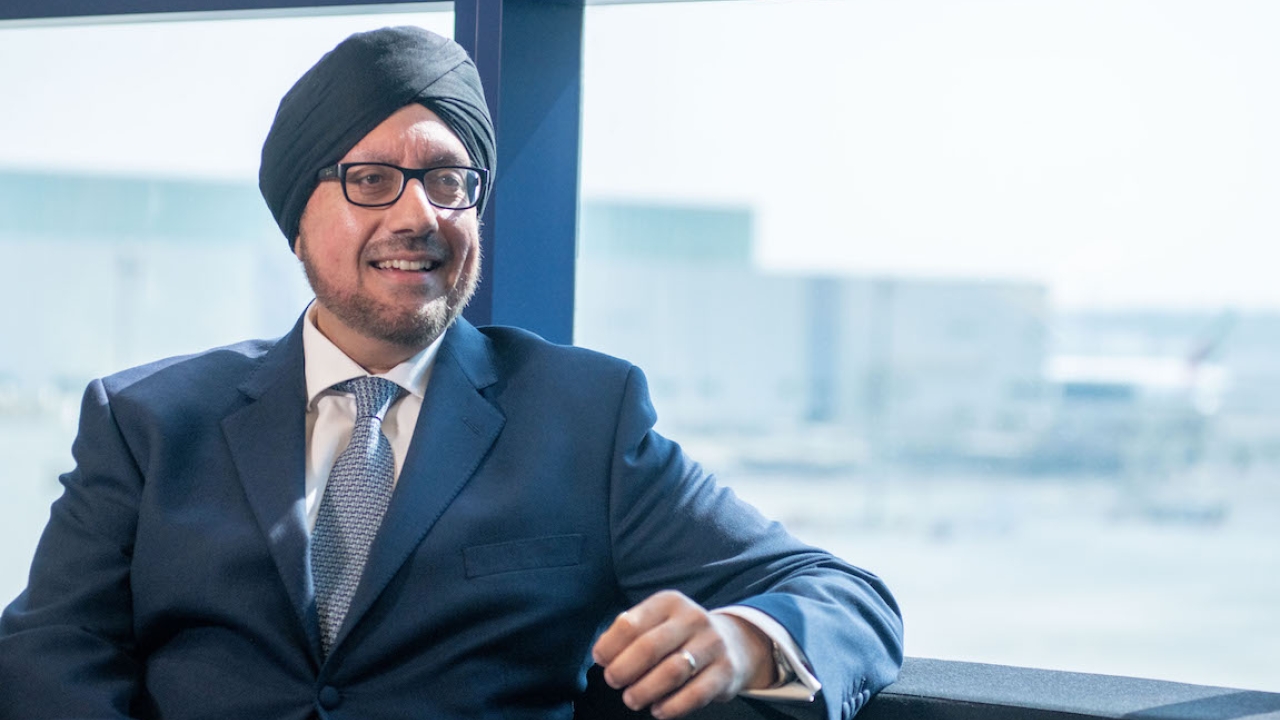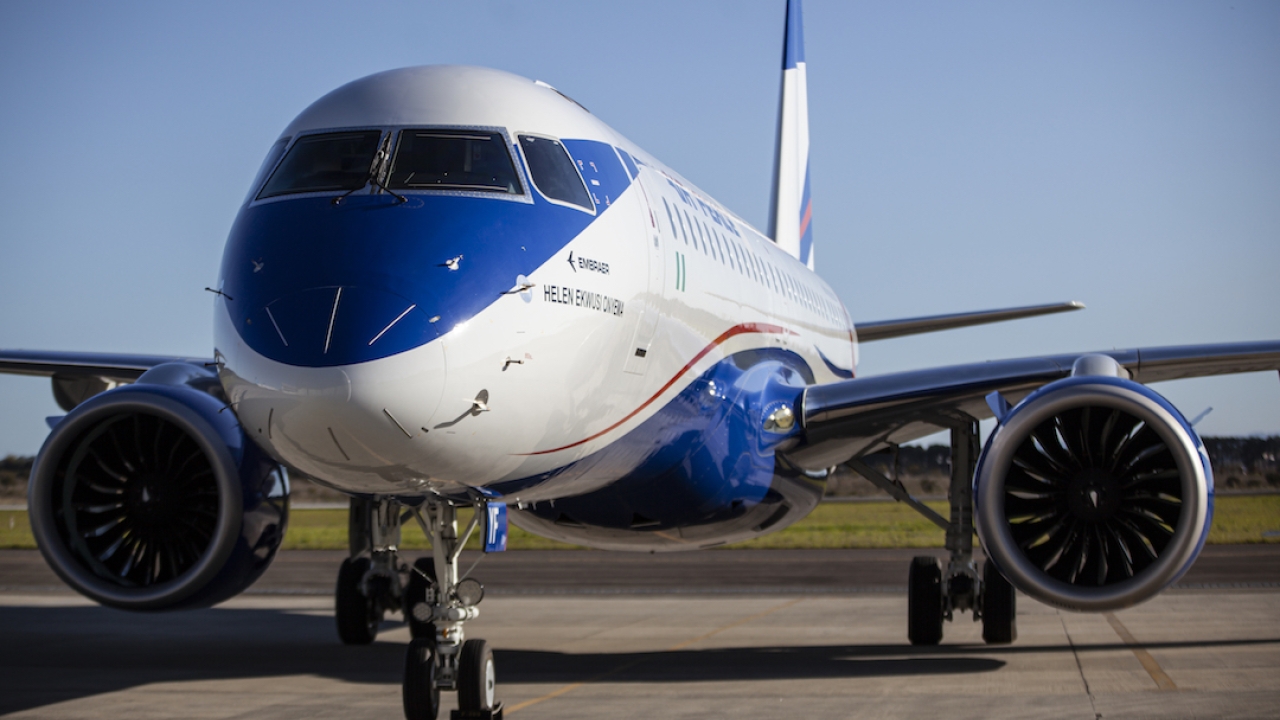Boeing's passion for Africa
Boeing is big in Africa – it manufactures 70% of the total number of aircraft on the continent.

Kuljit Ghata-Aura: “Since 2016, we have partnered with 40 organisations and invested around $12 million, working with underrepresented communities and young people.” Picture: Aerocomm.
Boeing has been in Africa for 75 years. It has 60 customers and supports 500 aircraft – a fact not lost on Kuljit Ghata-Aura, the company’s president Middle East, Turkey and Africa.
“We are in a privileged position with the fleet size in Africa but nobody is taking that for granted,” he said. “We know we have to work hard to maintain that position and we see the potential of one of the last genuine growth markets.”
Boeing’s research forecasts are tracking above average gross domestic product (GDP) growth over the next 20 years, with a continent benefiting from a young, smart population.
For Ghata-Aura, the desire to serve the sector well is personal. “We are bringing diversity to the team supporting Africa. We have a lot of people of African origin and I include myself in that. My entire family history for the previous generation was in east Africa, and I was born in Kampala,” he said.
“The way we [Boeing] have presented ourselves at events has shown a different side of the company – one that is resonating with the stakeholders.”
The Boeing Commercial Market Outlook is predicting a doubling of the number of aircraft operating in Africa by 2040, rising to 1,010. Ghata-Aura said: “This will be driven by a strong inter-regional, intra-Africa and domestic performance in some of the larger countries. We see that as being a 6.1% annual growth compounded. It is based on the intra-Africa traffic, which is driving the air growth numbers of 5.2%. This would put Africa third on the global list.”
The Boeing team is committed to supporting growth across the entire aviation sector through certain key elements – talent; safety; finance; competitiveness, and operational efficiency.
“Since 2016, we have partnered with 40 organisations and invested around $12 million, working with underrepresented communities and young people in a range of ways related to science, technology, engineering and maths (STEM) education and employability,” explained Ghata-Aura. “We have given them skills that will allow them employment in the 21st century, even if it is not in aviation.”
Safety is always a priority and Boeing has had ground to make up. Ghata-Aura details the extensive changes within the group since the accidents that took the 737MAX out of service, and specifically within Africa. He added: “Not a day goes by when people at Boeing don’t remember the accidents, one of which involved an African carrier and an important customer of ours.
“We held our first Boeing African operators’ forum in Tanzania earlier this year and it was really successful. Fifty customers attended and it was a great opportunity for the teams within Boeing to coalesce with the customers on priorities and best practice.
“We are not in any way taking away responsibility from operators and in-country regulators, but we are providing our support, assistance and guidance, and working closely with the International Air Transport Association (IATA) and the International Civil Aviation Organization (ICAO) to ensure there is a commonality of approach.”
In September, the company announced a partnership with AviAssist, the independent, non-profit organisation dedicated to promoting professional development and research in African aviation safety. Ghata-Aura said: “They are creating safety promotion centres to ensure that African safety champions have access to the latest resources and training. Also, their research is linked to safety professionals and policymakers, to ensure that whatever they are doing is reflected in policy and taken on board.”
When it comes to finance, the Boeing Capital Corporation is an integral part of the vast majority of any sales campaigns run in Africa.
Ghata-Aura said: “They have unparalleled access to the lessor and finance communities to enable a customer to have all the options needed in terms of how to finance an aircraft. Another really important role they play is to help customers through the different processes, maybe to avail themselves of export financing.
“We have the experts on the ground who regularly work with these customers, and we are out with lessors and financiers and telling them the story of Africa,” he added.
However, when it comes to competitiveness and operational efficiencies, challenges remain.
Ghata-Aura’s view is one echoed at aviation conferences across the region. There must be liberalisation of the market.
He said: “We have always been advocates of the single African air transport market (SAATM) but another significant consideration is the African Continental Free Trade Area (AfCFTA).
“We want an open sky, where you don’t have to continually negotiate bi-laterals. That will improve the choice and cost for the consumer. But a free trade area is also important as you have to support these aircraft, so being able to get aircraft parts, or move people between borders easily, is a key element in making sure there is a holistic approach in the African aviation business.”
The second big challenge is around operational efficiencies. Ghata-Aura said: “There are some statistics that say that the cost of a ticket if you are African is around 75% of average income, whereas in the UK or Thailand it is 10%.
“Every new aircraft that we deliver is more fuel-efficient so, hopefully, they will bring fuel costs down.
“We also have an array of digital products that can help operators become more efficient, such as predictive maintenance, which reduces cycle time for maintenance and lessens the time that aircraft are on the ground when they shouldn’t be.
“The market would benefit from these types of enhancements in terms of cost but, clearly, until there is a broader liberalisation, that is still going to be a challenge.”
The final major challenge is sustainability. Ghata-Aura said: “This is probably the most important issue facing the world.
“I think that we are all now seeing it up close and personal in a way that, maybe, we didn’t before. At the moment, aviation accounts for just 2% of the overall emissions and only 12% of transport, but given the predicted growth, that is going to change.”
Boeing went net zero in its operations in 2020, and is producing new aircraft that are 20-25% more fuel efficient. However, older aircraft are going to be in use for some time, especially in Africa.
Ghata-Aura suggests that the company’s suite of digital products can help. “Statistics have shown that you can get another 10% of efficiency by deploying some of these. That could be to help you do a continuous descent landing, which burns less fuel, or to navigate you through better weather that doesn’t burn up as much fuel.”
However, sustainable aviation fuel is the bigger solution. The challenge is to ensure it is available in the African markets.
Ghata-Aura said: “We are working with the Roundtable on Sustainable Biomaterials (RSB) on a programme to help the aviation industry play a leading role in tackling climate change, creating jobs and supporting the economy of Africa. We are working with Ethiopian on a sustainable aviation fuel (SAF) road map, to help them assess what feedstock is available for SAF production. We are also working in South Africa with the RSB on a feasibility study for SAF development in the sugar cane sector.
“If you look at where and how SAF is produced, the pathways include waste-to-energy, wind and solar. So you have to say that, clearly, there is the right feedstock for SAF here.
“Is it as well developed as other places? Probably not. But it is an area where a lot of people are looking at how to get Africa involved in ramping up SAF to a worldwide scale where it is affordable. And that requires a concerted effort from SAF producers, and governments to create incentives to enable operators to buy it and still make money.”
• A few days after this interview was completed, 17 of the SAATM signatories reached an agreement on a pilot phase as a next step.
Stay up to date
Subscribe to the free Times Aerospace newsletter and receive the latest content every week. We'll never share your email address.

